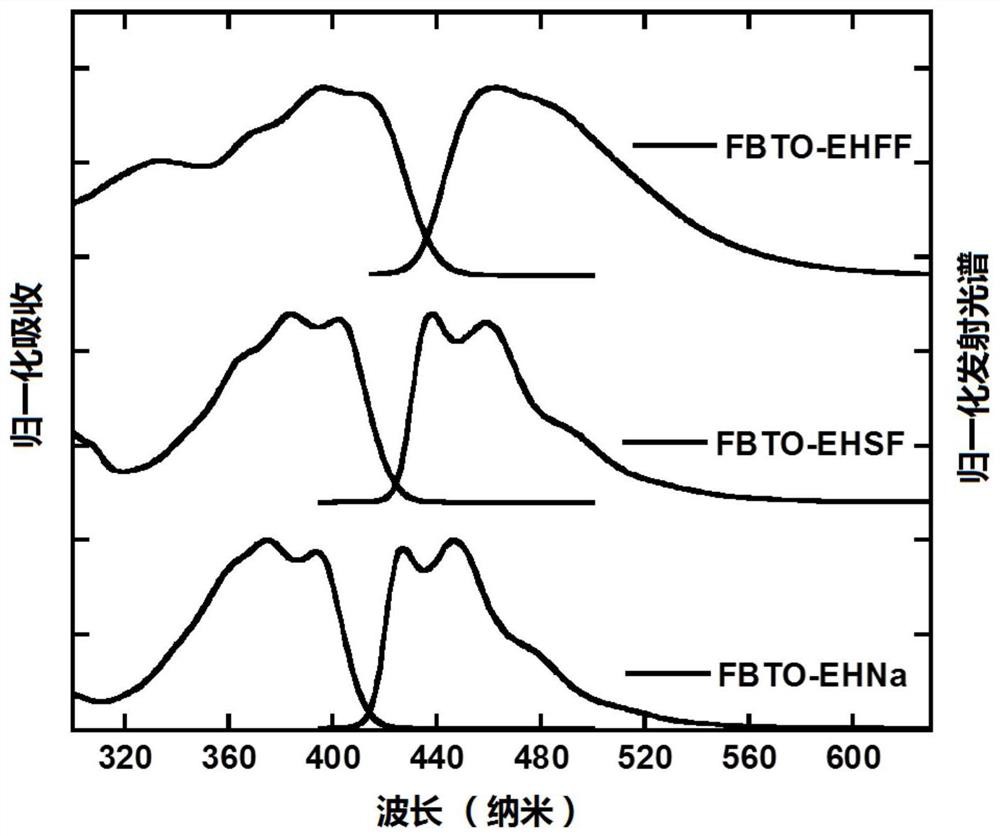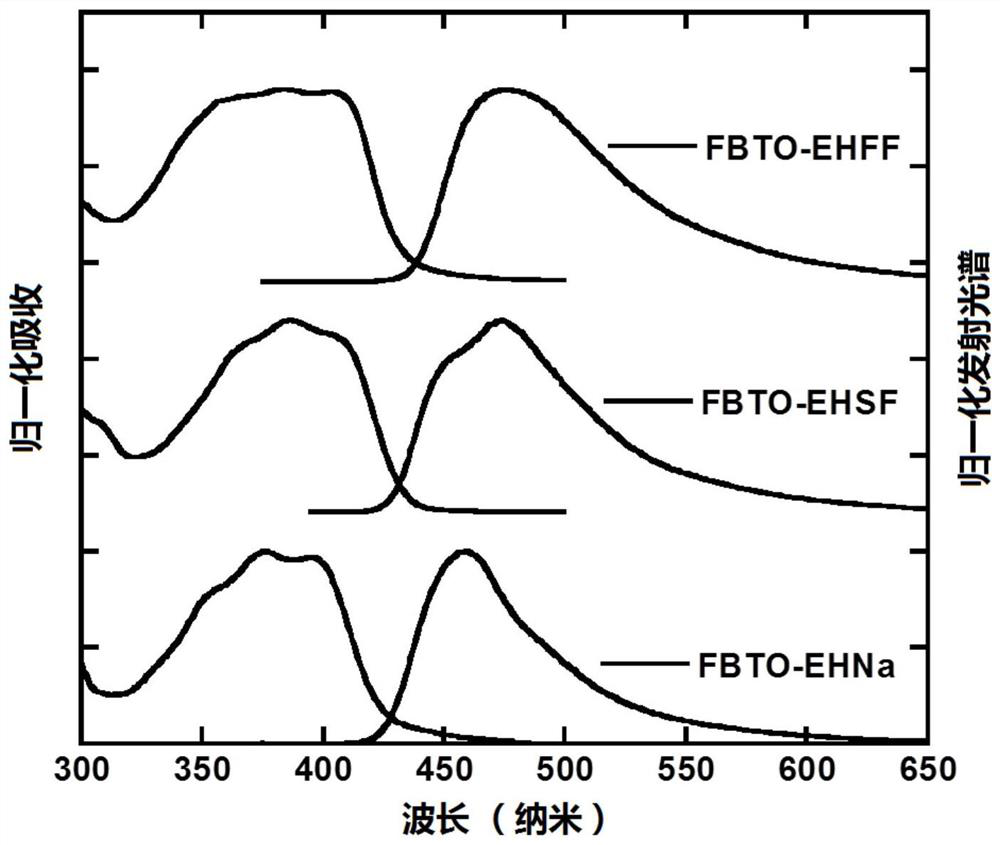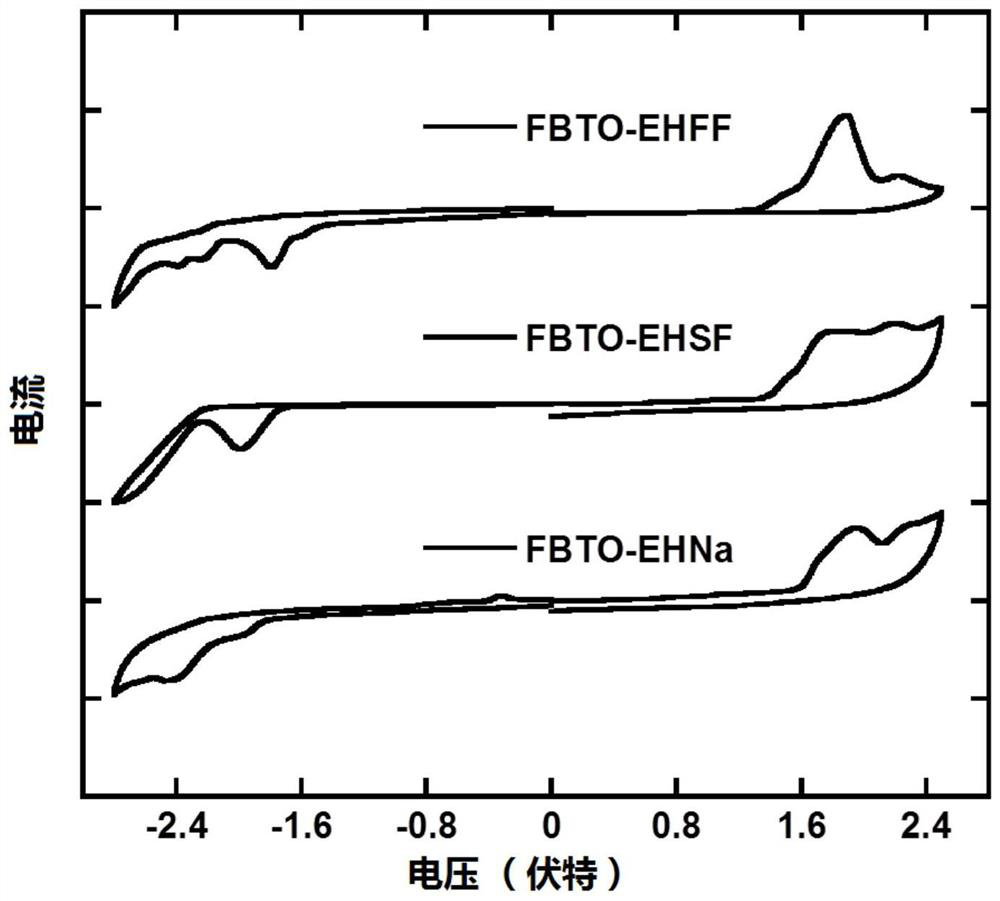A class of light-emitting small molecule materials based on macrocyclic units and its preparation method and application
A technology of small molecules and light-emitting layers, applied in the direction of light-emitting materials, chemical instruments and methods, electrical components, etc., can solve the difficulties in the purification of light-emitting polymers, batch repeatability, unsuitable for the popularization and application of large-area OLED devices, complex processes, etc. problems, to achieve the effects of excellent electron and hole transport performance, excellent electroluminescence performance, and high fluorescence emission efficiency
- Summary
- Abstract
- Description
- Claims
- Application Information
AI Technical Summary
Problems solved by technology
Method used
Image
Examples
Embodiment 1
[0037] Example 1 Synthesis of 9,9-bis(2-ethylhexyl)-2,7-bis(2-methylsulfinyl)phenyl)-9H-fluorene (Compound 3)
[0038] 2,2'-(9,9-bis(2-ethylhexyl-9H-fluorene-2,7-diyl)-bis(4,4,5,5-tetramethyl-1,3,2- Dioxaborolane) (9.64g, 15mmol, purchased from Guangzhou Kongsiben Chemical Co., Ltd.), 1-bromo-2-(methyl-sulfinyl)benzene (7.23g, 33mmol, New J. Chem., 2015, 39, 6513-6521.), tetrakis(triphenylphosphine) palladium catalyst (0.87g, 0.75mmol), tetrabutylammonium bromide phase transfer catalyst (0.24g, 0.75mmol) under nitrogen atmosphere Completely dissolve in 200ml toluene, then inject 20.7ml fresh K 2 CO 3 (20.7 g, 0.15 mol) aqueous solution (50 wt%) and reacted at 80°C for 24 hours. After cooling to room temperature, the organic layer was separated, the aqueous layer was extracted with dichloromethane, washed with water, and then concentrated by a rotary evaporator, and the crude product was purified by silica gel column chromatography. A mixture of petroleum ether / dichlorometh...
Embodiment 2
[0040] Example 2 Synthesis of 9,9-bis(2-ethylhexyl)bis[2,3-b; 6,7-b]benzo[d]thiophene (Compound 4)
[0041] 9,9-bis(2-ethylhexyl)-2,7-bis(2-methylsulfinyl)phenyl)-9H-fluorene (468.9 mg, 0.668 mmol), trifluoromethanesulfonic acid (4.2 mL) ) and phosphorus pentoxide (254.5 mg, 1.336 mmol) were added to a 250 mL round bottom flask. The mixture was stirred at room temperature for 12 hours and then poured into ice water. After the precipitate was collected and dried in vacuo, it was dissolved in 50 ml of pyridine under nitrogen and reacted at 90°C for 8 hours. When it cooled to room temperature, the mixture was extracted with dichloromethane and washed with water, concentrated by rotary evaporator. The crude product was purified by silica gel column chromatography using petroleum ether as eluent. A white solid was obtained in 52% yield (207 mg).
[0042]
Embodiment 3
[0043] Example 3 Synthesis of 9,9-bis(2-ethylhexyl)bis[2,3-b;6,7-b]benzo[d]thiophene-S,S-dioxide (Compound 5)
[0044] 9,9-Bis(2-ethylhexyl)bis[2,3-b;6,7-b]benzo[d]thiophene (2.89 g, 4.8 mmol) was completely dissolved in 40 ml of anhydrous bisulfite at room temperature In methyl chloride, m-chloroperbenzoic acid (4.14 g, 24 mmol) was added in three portions. After stirring at room temperature for 8 hours, saturated aqueous sodium hydroxide solution was added to terminate the reaction. The mixture was extracted with dichloromethane and washed with water and concentrated by rotary evaporation. The crude product was purified by silica gel column chromatography using petroleum ether / dichloromethane mixture (2:1 by volume) as eluent. A white solid was obtained in 84% yield (2.69 g).
[0045]
PUM
| Property | Measurement | Unit |
|---|---|---|
| thickness | aaaaa | aaaaa |
Abstract
Description
Claims
Application Information
 Login to View More
Login to View More - R&D
- Intellectual Property
- Life Sciences
- Materials
- Tech Scout
- Unparalleled Data Quality
- Higher Quality Content
- 60% Fewer Hallucinations
Browse by: Latest US Patents, China's latest patents, Technical Efficacy Thesaurus, Application Domain, Technology Topic, Popular Technical Reports.
© 2025 PatSnap. All rights reserved.Legal|Privacy policy|Modern Slavery Act Transparency Statement|Sitemap|About US| Contact US: help@patsnap.com



